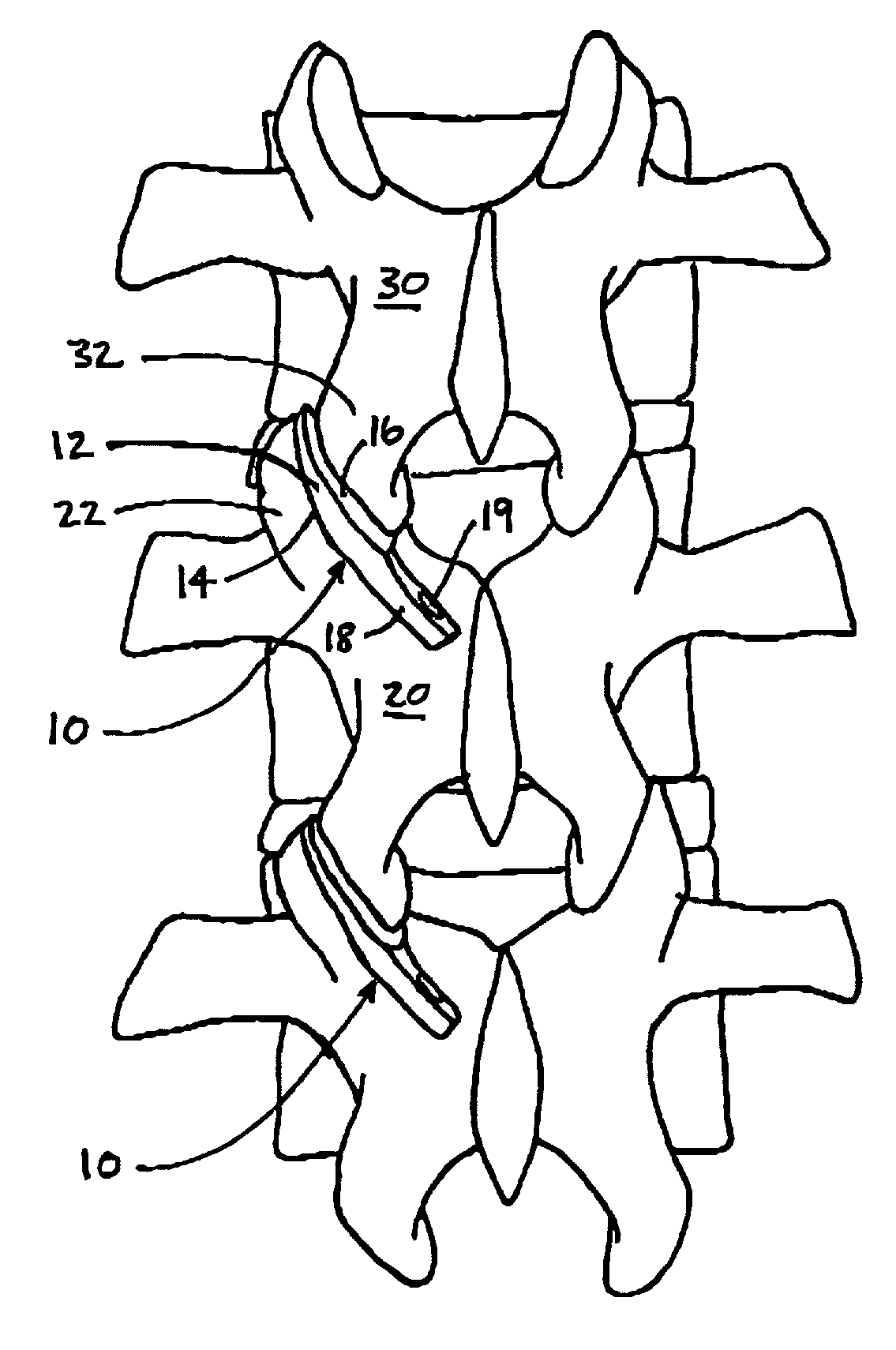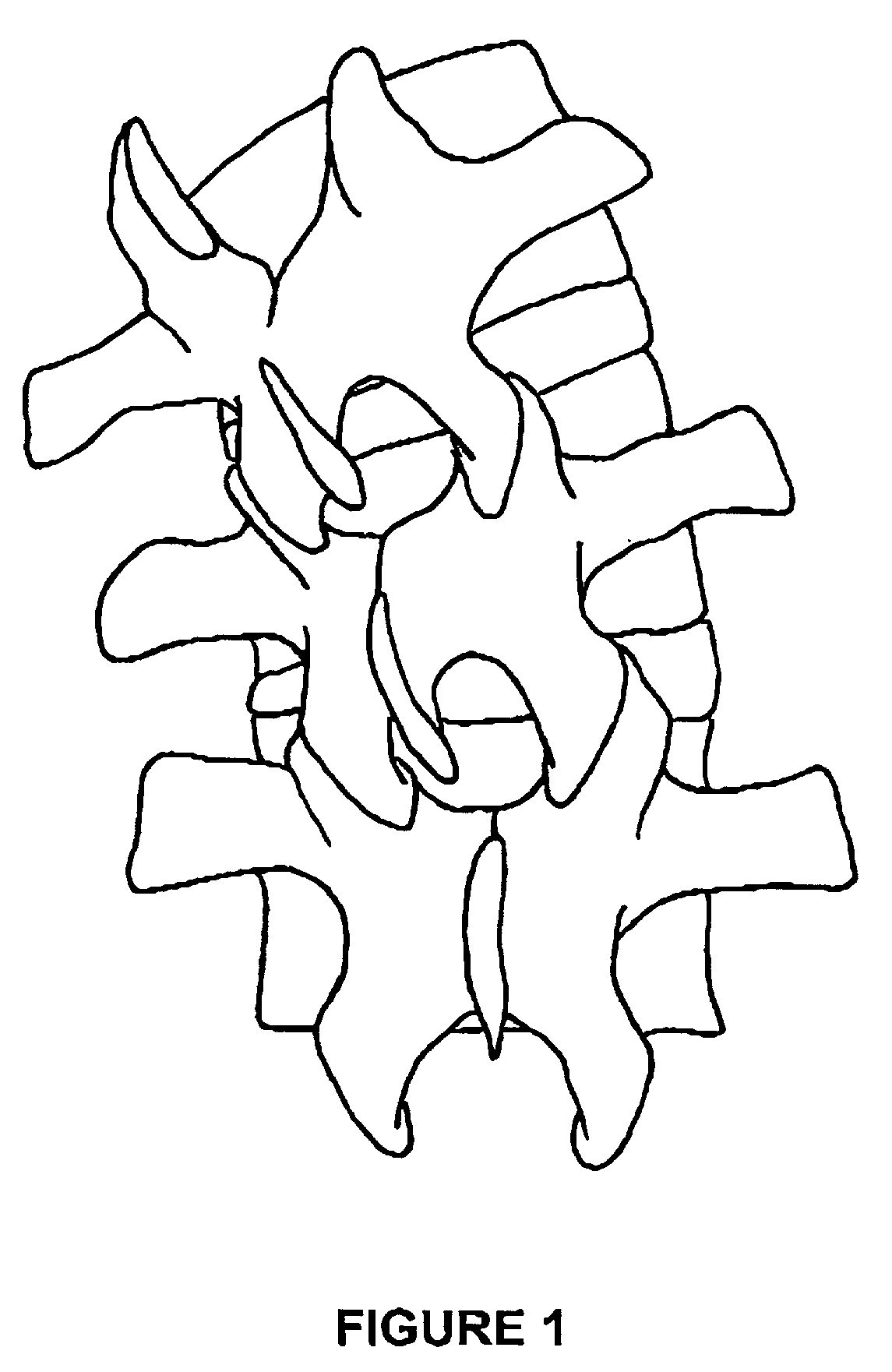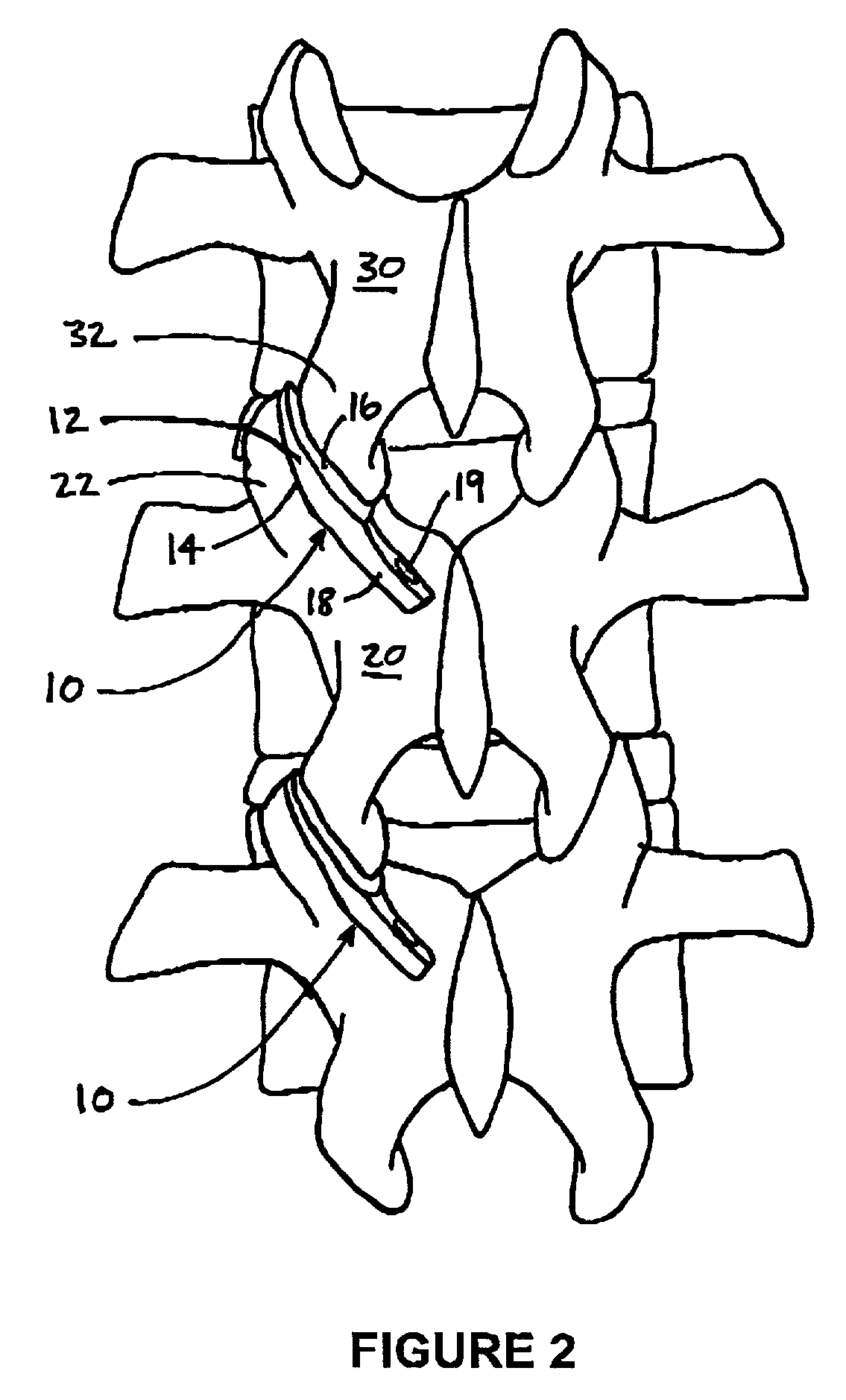Method and device for treating scoliosis
a technology for scoliosis and scoliosis, applied in the field of scoliosis treatment methods and devices, can solve the problems of reduced spine flexibility, cardiac problems may also present, and reduce the flexibility of the spin
- Summary
- Abstract
- Description
- Claims
- Application Information
AI Technical Summary
Benefits of technology
Problems solved by technology
Method used
Image
Examples
working examples
Example 1
Cadaveric Implantation
[0059]A spinal facet cap based on the embodiment shown in FIGS. 2 and 3A, having a diameter of about 12 mm, was surgically implanted into the scoliotic spine of a cadaver (female, elderly) at the Department of Anatomy and Cell Biology at Queen's University, Kingston, Ontario, Canada, to evaluate the ease or difficulty of placement and the seating of the facet cap in the facet joint. There were no complications in implanting the facet cap into the spine, suggesting that use of the facet cap for treating scoliosis could become a routine surgical procedure. Moreover, during this exercise it was found that seating of the facet cap in the facet joint was fully satisfactory. This exercise therefore provides a strong indication that the spinal facet cap of the invention will be effective in the treatment of scoliosis.
example 2
Prosthetic Model
[0060]Osteotomies were performed on the mid-lumbar facets of a prosthetic model of an adult human spine to create a scoliotic model. This is shown in the radiograph of FIG. 8A, where reference numeral 200 refers to pins used to hold the model together. Spinal facet caps like that shown in FIG. 3F were then inserted into the mid-lumbar facet joints, which substantially corrected the scoliotic curvature of the spine. This can be seen in the radiograph of FIG. 8B, where reference numeral 210 refers to the facet caps.
example 3
Formulation of In Vivo Placement
[0061]The success of cadaveric implantation led to the formulation of tempo in vivo application. During the course of standard scoliosis surgery, all facet joints from the superior to inferior aspect of the proposed fusion levels are stripped of the joint capsule, the cartilage removed, and the joint decorticated. Prior to destruction of the joints an in vivo model for facet cap placement is present, as no further dissection of the spine is necessary, in which the facet caps can be placed and removed in minutes. This has allowed the formulation of a working model for application of the facet caps. Thus, the below examples relate to the temporary insertion of facet caps during the course of standard corrective surgery, to establish an operative technique for their insertion, and to evaluate their efficacy and ease of use.
PUM
 Login to View More
Login to View More Abstract
Description
Claims
Application Information
 Login to View More
Login to View More - R&D
- Intellectual Property
- Life Sciences
- Materials
- Tech Scout
- Unparalleled Data Quality
- Higher Quality Content
- 60% Fewer Hallucinations
Browse by: Latest US Patents, China's latest patents, Technical Efficacy Thesaurus, Application Domain, Technology Topic, Popular Technical Reports.
© 2025 PatSnap. All rights reserved.Legal|Privacy policy|Modern Slavery Act Transparency Statement|Sitemap|About US| Contact US: help@patsnap.com



